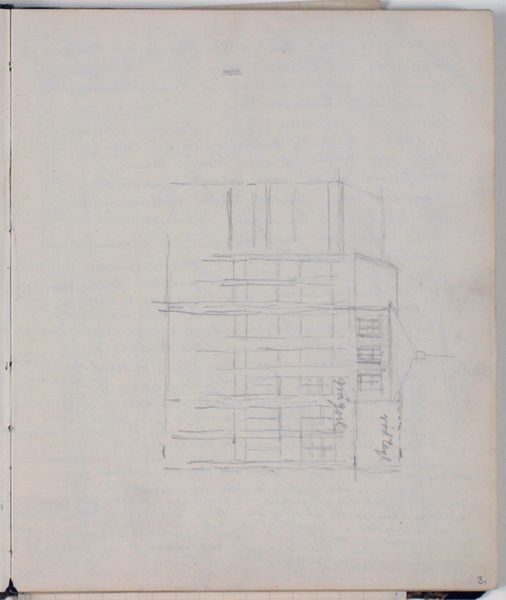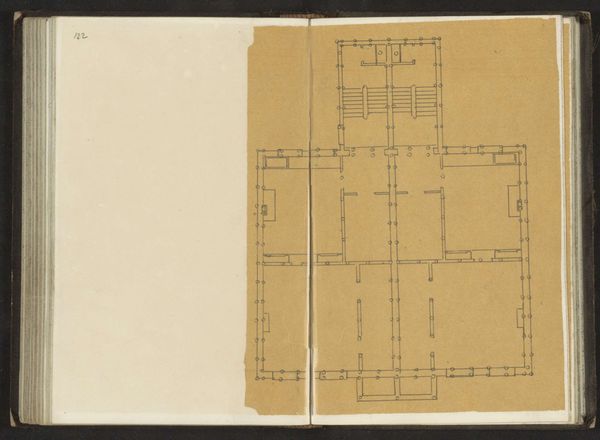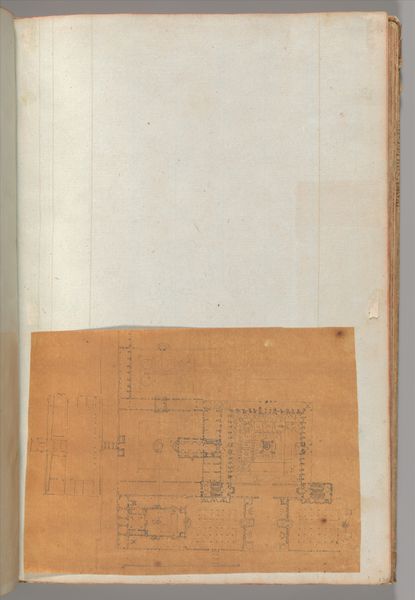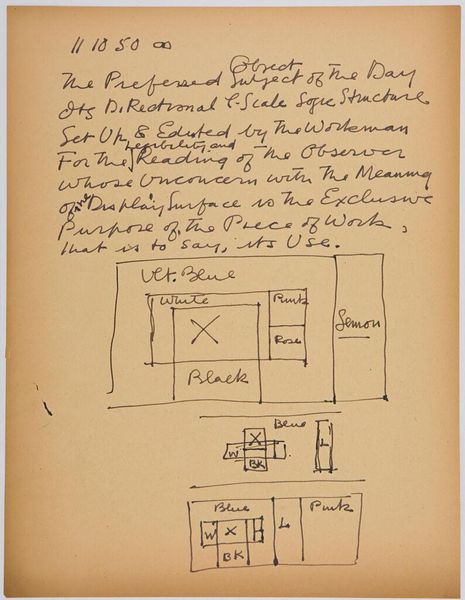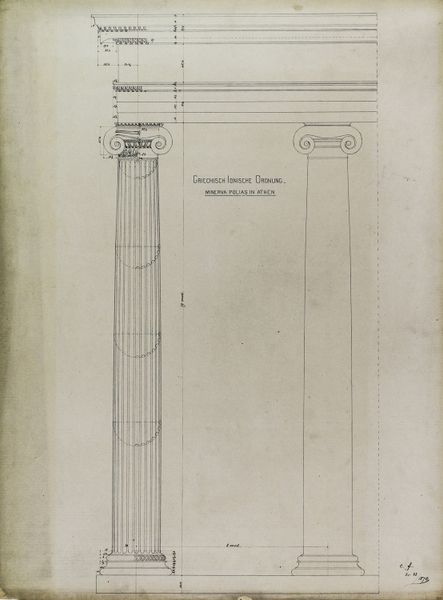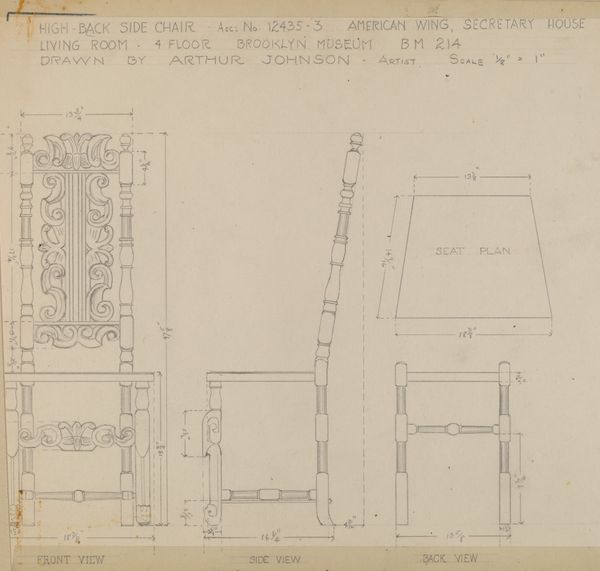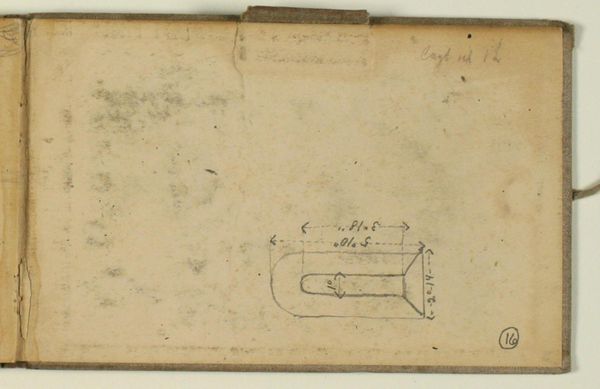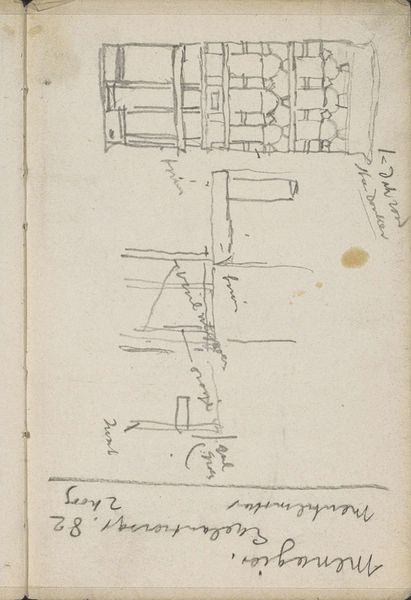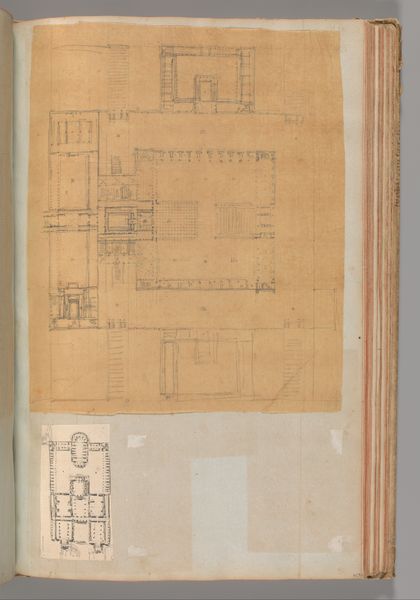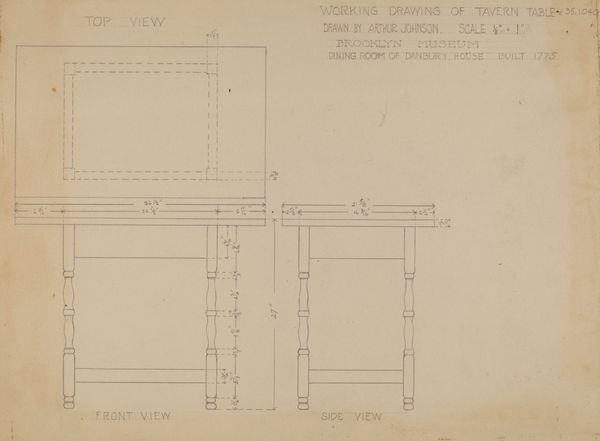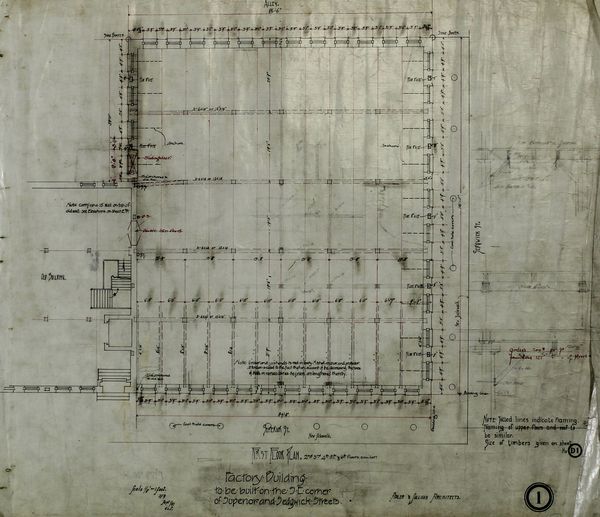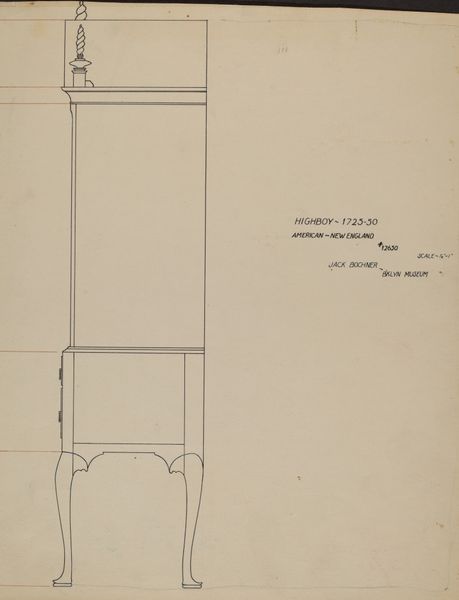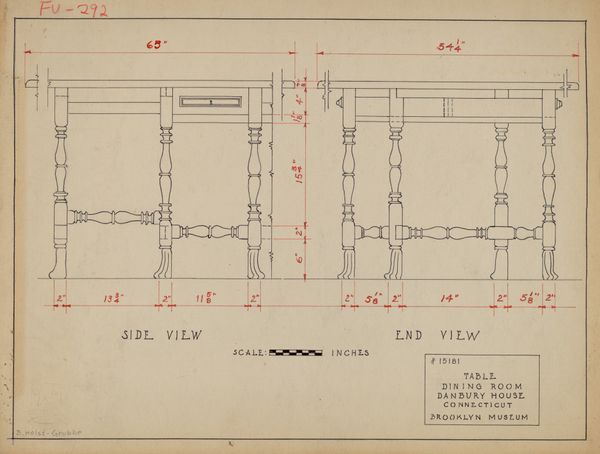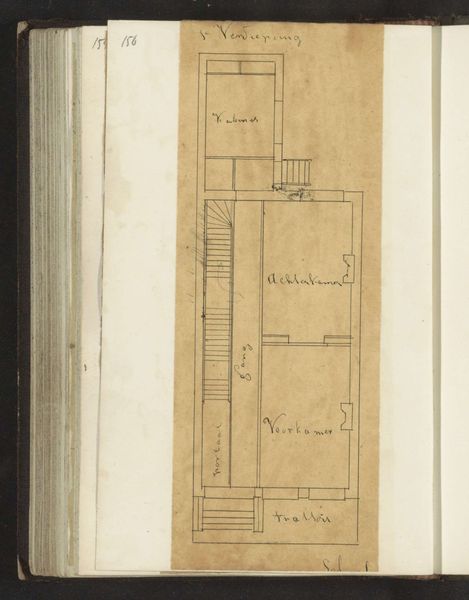
drawing, paper, pencil
#
drawing
#
landscape
#
paper
#
pencil
#
neo-romanticism
Curator: We’re looking at Niels Larsen Stevns' “Udkast til gravmæle,” a drawing from between 1932 and 1935, rendered in pencil on paper. It's currently held at the SMK, the National Gallery of Denmark. Editor: Immediately, I'm struck by the starkness of it, the rawness of the lines. It's clearly a preliminary sketch, very functional. You can almost feel the artist grappling with the design. Curator: Indeed. The design focuses on variations of grave markers, primarily crosses adorned with wreaths and inscribed with the phrase "Jeg er opstandelsen og livet," or "I am the resurrection and the life". The artist’s Neoromantic style shines through. There's a weightiness in the symbol choice, the enduring power of Christian iconography to represent grief and hope. Editor: From a material perspective, I find myself thinking about the economy of it. Pencil on paper – humble materials, accessible materials. This contrasts sharply with the potential expense and permanence of the finished grave markers themselves. It is a design destined to be rendered in stone or metal, undergoing a complete transformation from paper to permanence, from temporary marks to lasting materials. Curator: I agree. The contrast emphasizes the transition of earthly existence itself. The rose wreaths circling each cross speak to an attempt to soften what may feel harsh about the geometry of a cross. Symbolically, roses can be associated with earthly passions but also heavenly perfections and beauty beyond compare. Here they almost suggest cycles of rebirth and life. Editor: Considering the social context, the period between the wars, a simple, earnest material makes complete sense for its function. It strips away ostentation in favor of clarity. Also, the repetitive quality makes me think it could be more of a catalogue—options and samples that clients could choose between. Curator: That's a sharp observation. We're seeing more than just a single artistic expression. It's almost like a meditation on motifs of remembrance and salvation within reach to the general populace, shaped by neo-romanticism that valued subjective experience of natural environments while seeking timeless forms for human feelings. Editor: Yes. A quiet look at what labor looks like in rendering respect for lives lived. Curator: A contemplative note to end on, capturing that essence so precisely. Editor: Absolutely. It has a poignant impact.
Comments
No comments
Be the first to comment and join the conversation on the ultimate creative platform.
